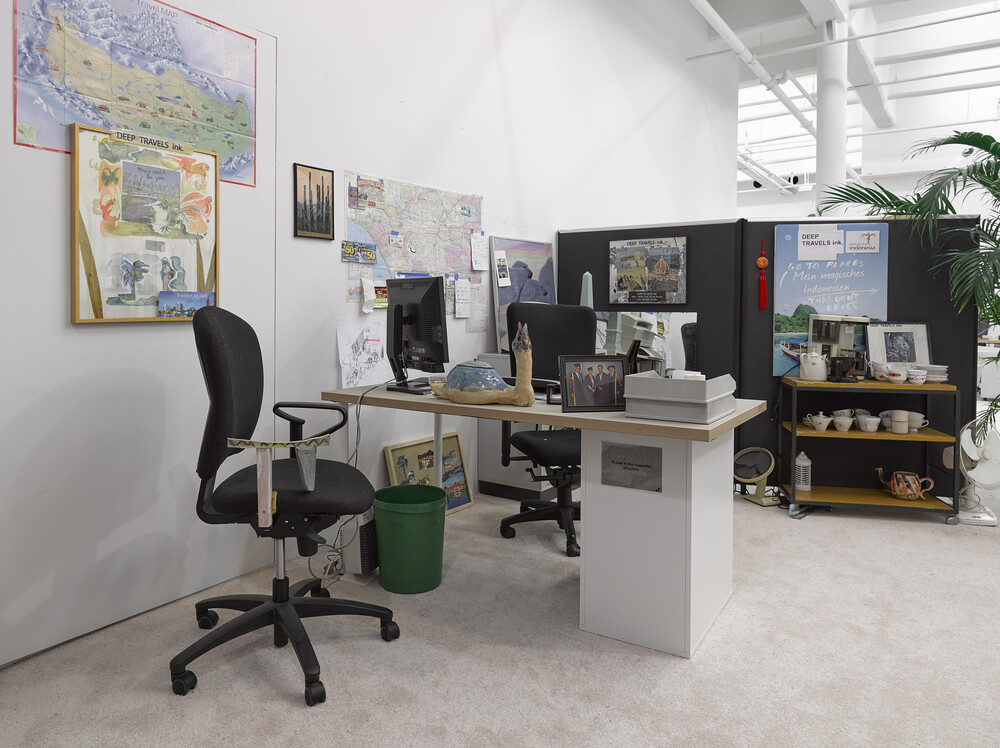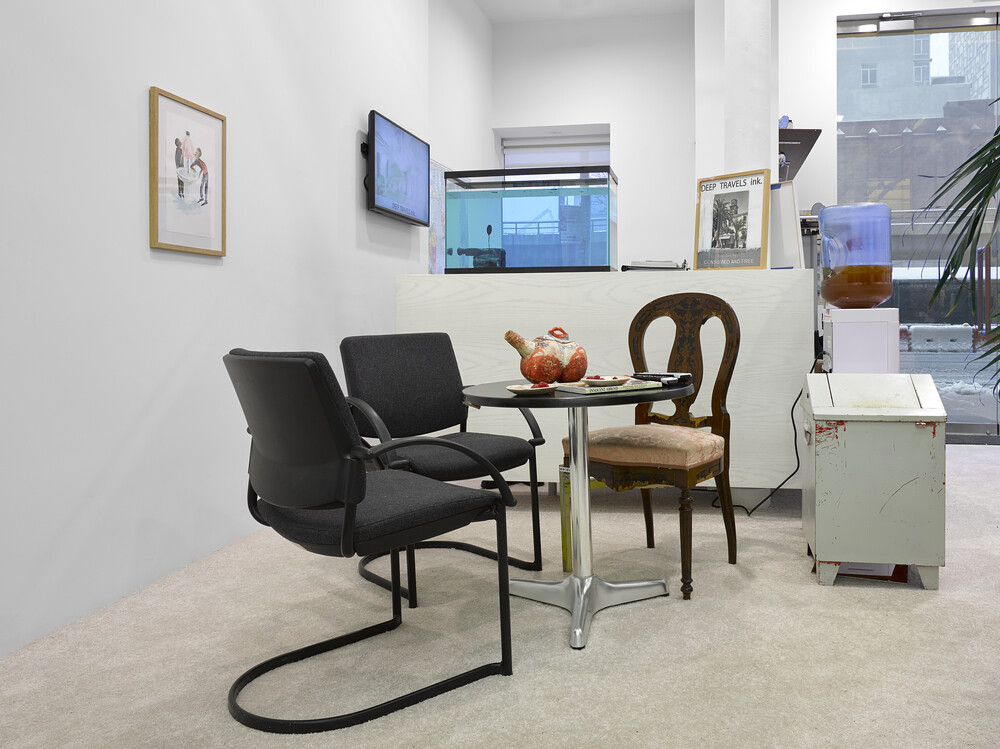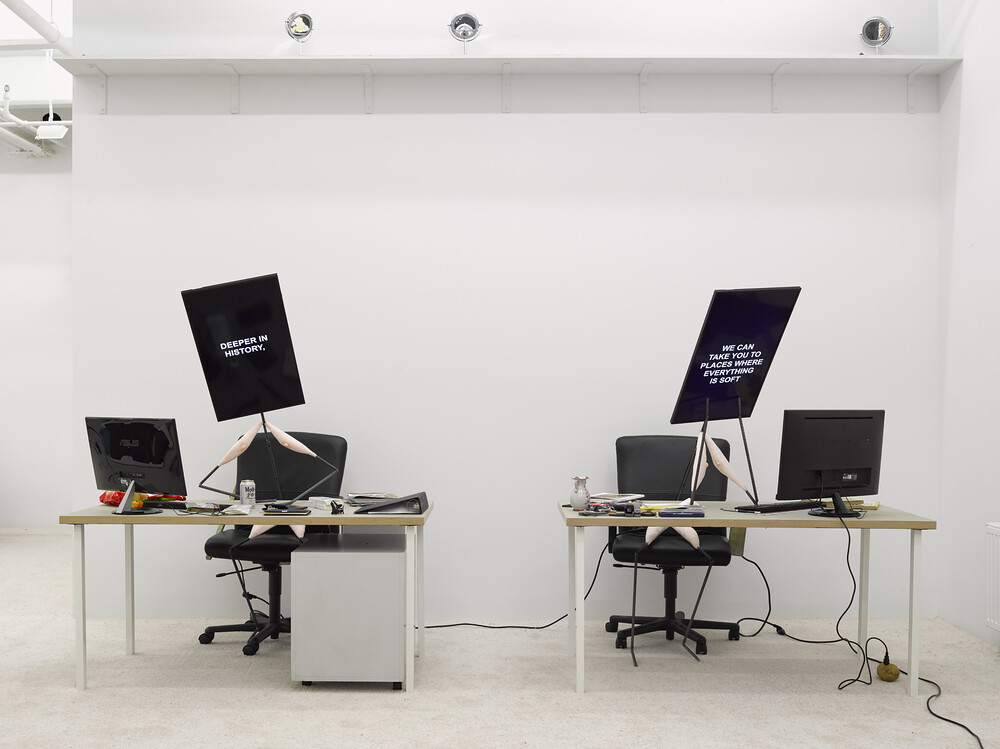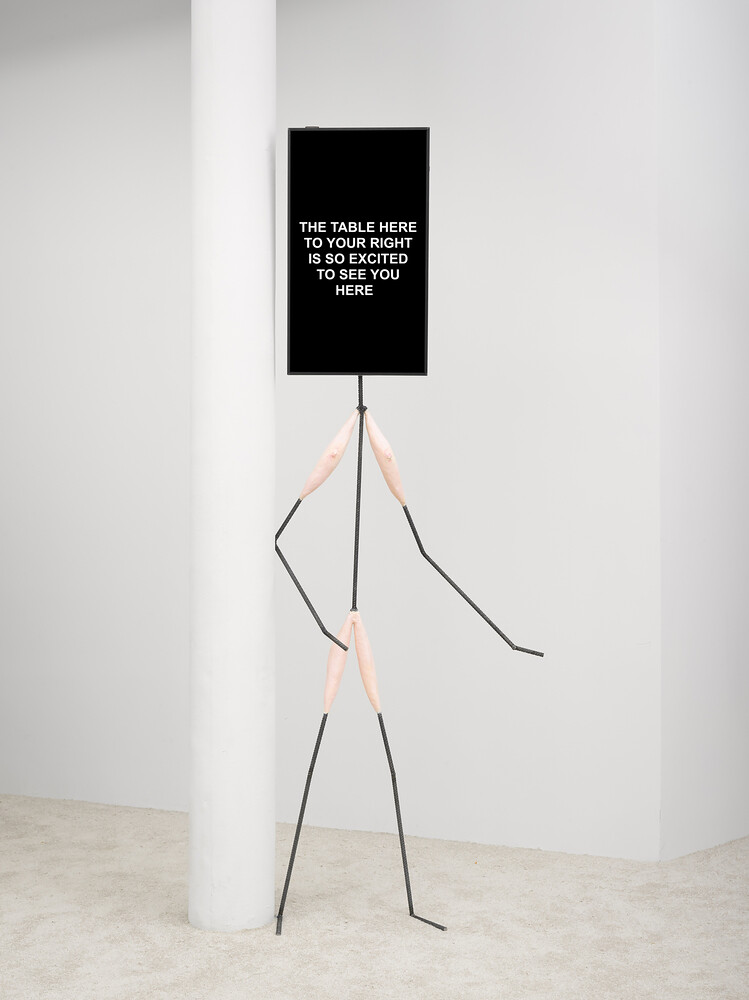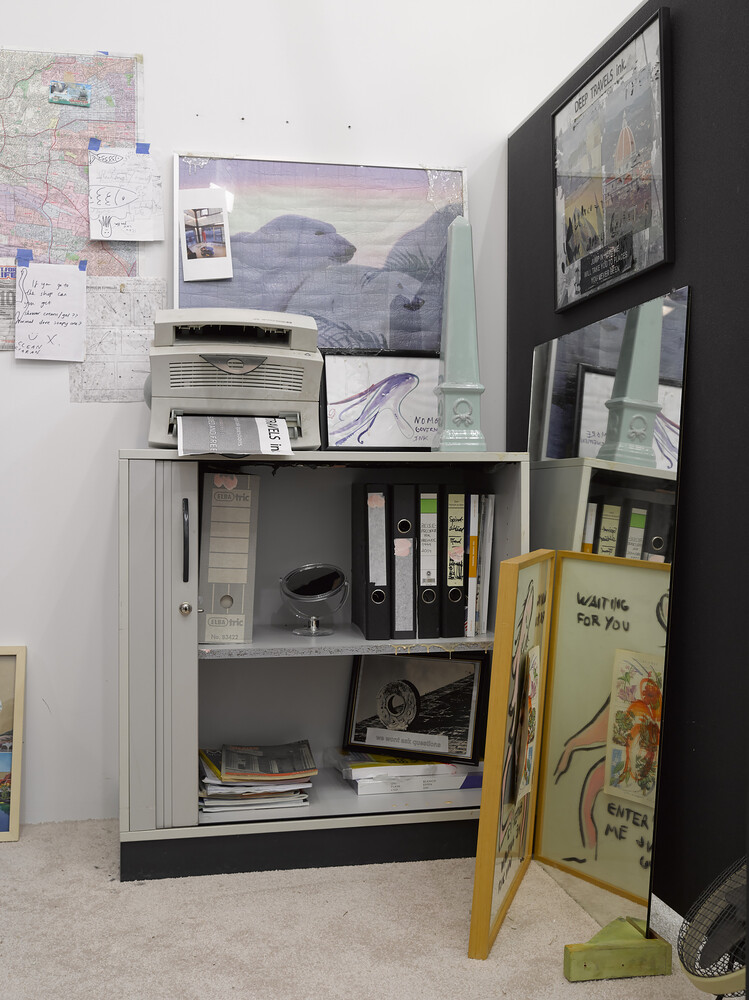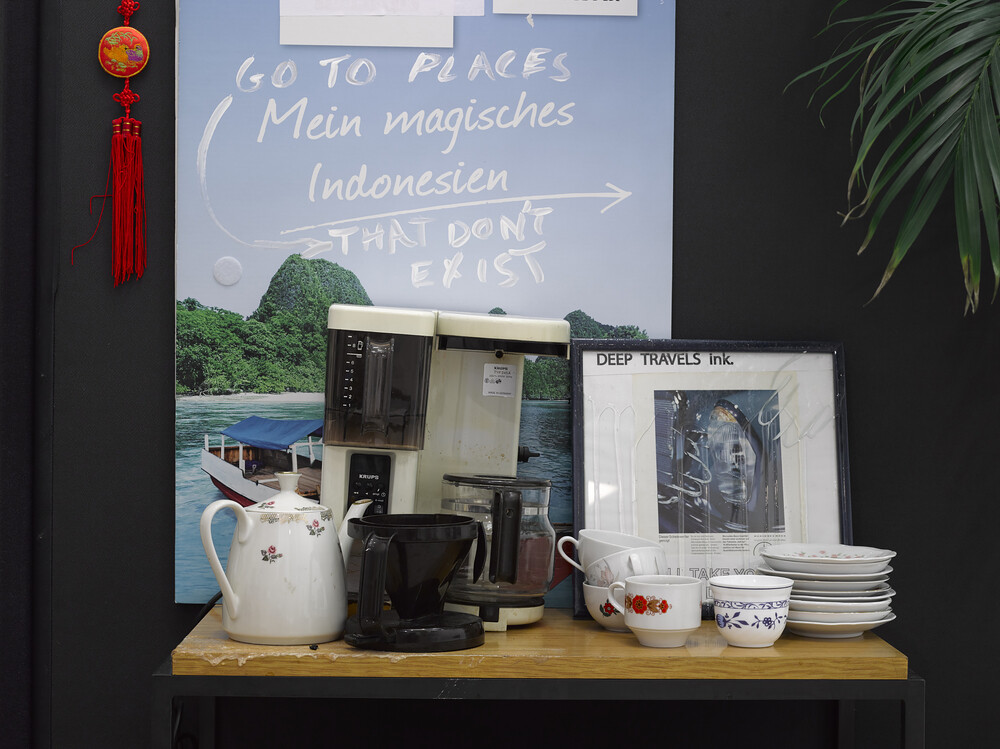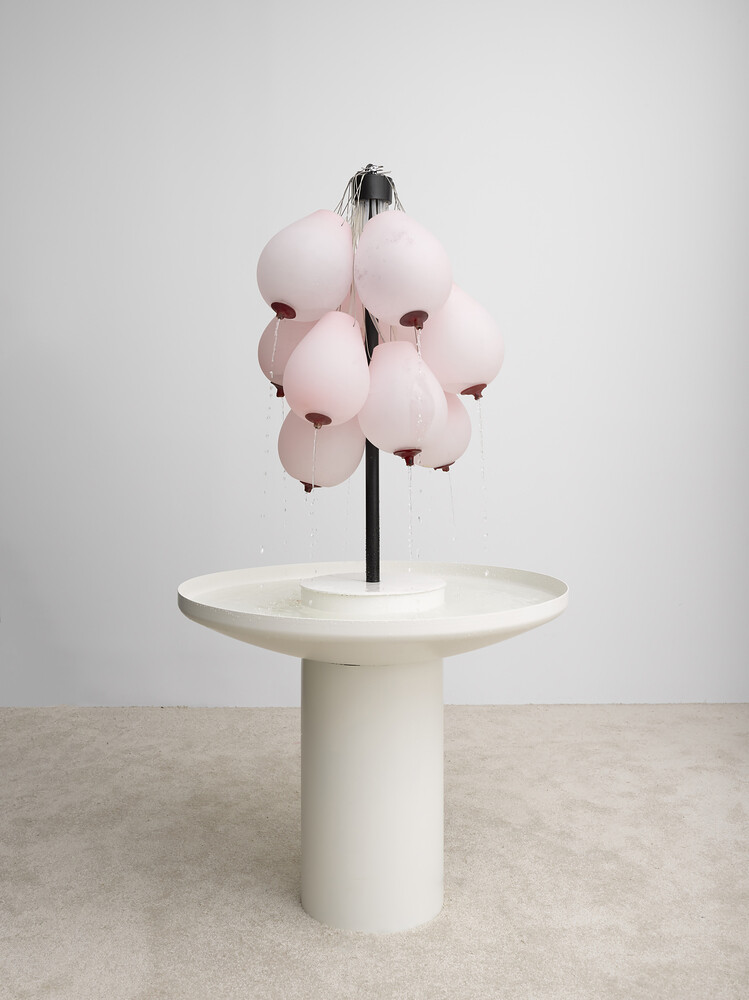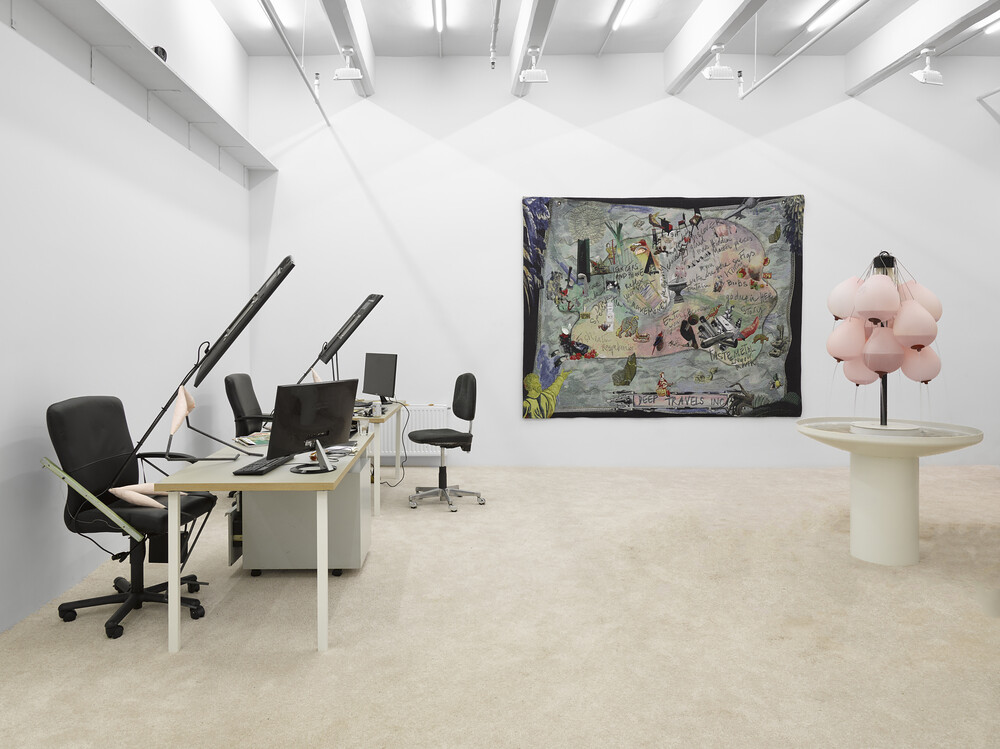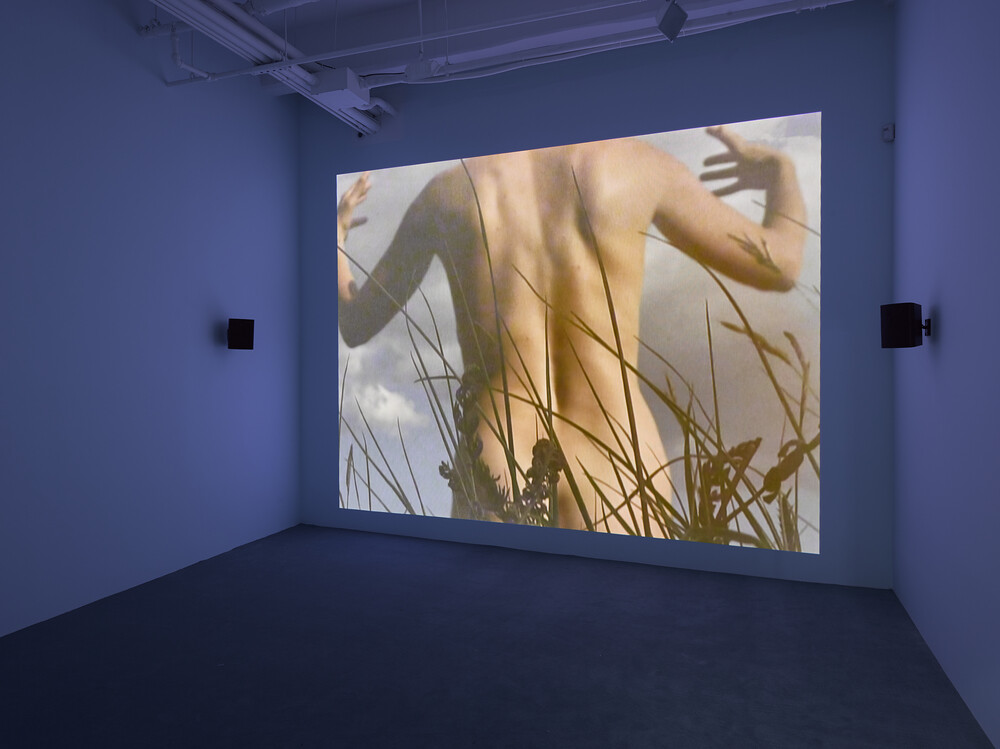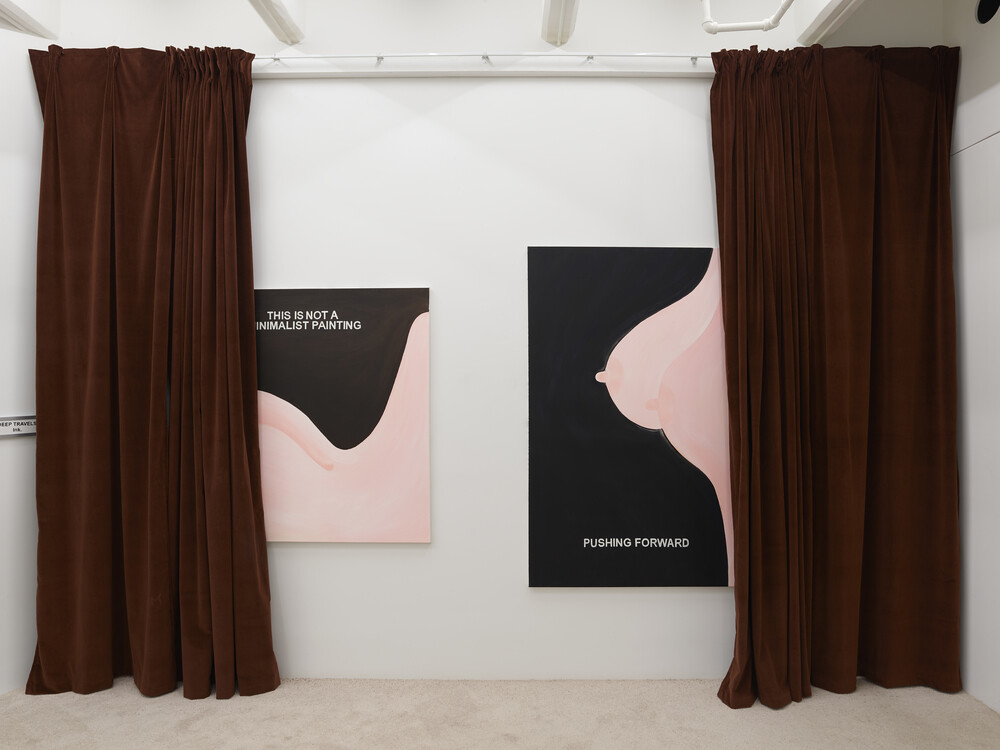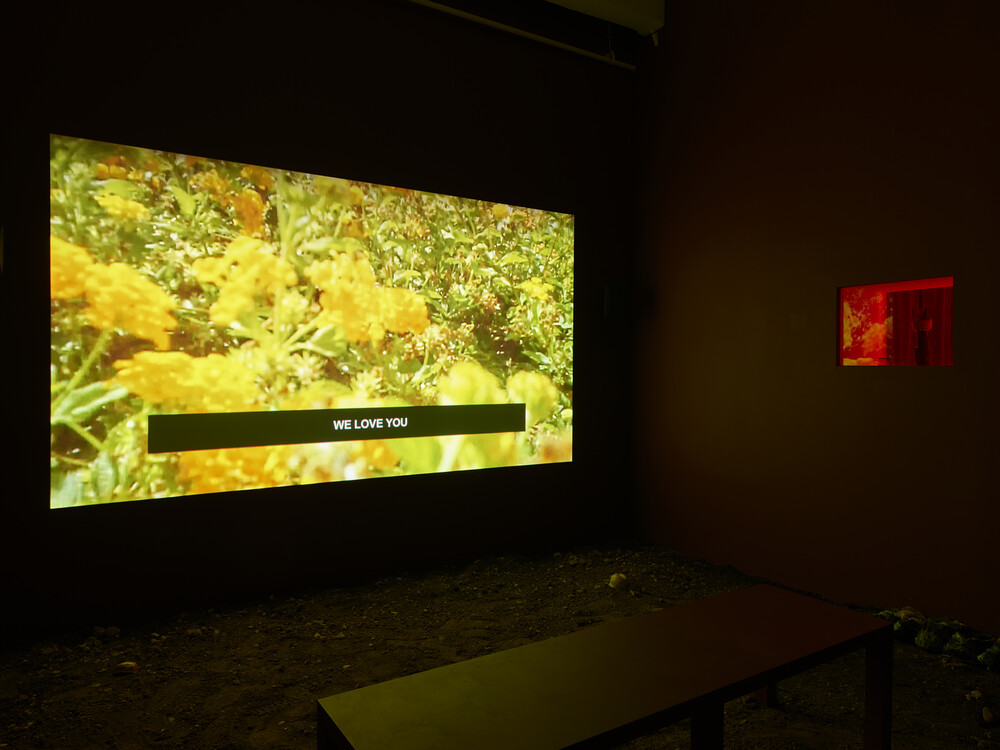Eager to see the art in Laure Prouvost’s first solo exhibition at Lisson Gallery in New York, visitors might breeze through its central installation: Uncle’s Travel Agency Franchise, Deep Travel Ink. NYC (2016–18). Situated at the entrance to the gallery, it looks like an unkempt and outdated version of an art gallery’s normally pristine front desk featuring a guest book, a stack of press releases, and a 3-ring binder containing an artist’s curriculum vitae and relevant press materials. Instead, Prouvost has surrounded the gallery attendant with promotional airline posters, maps, a bookshelf lined with travel guides, a coat rack and umbrella stand, an outmoded printer, a dirty water cooler, and even the requisite framed family photo on the desk. To the right of this configuration is a table with two chairs and a ceramic teapot in the shape of a pair of buttocks that is the first explicit clue to the whimsy and weirdness of Prouvost’s art.
The exhibition’s conceit is that all the work on display—including installation, sculpture, painting, textile, and video—is connected to this travel agency. Three other workstations feature stacks of plane-ticket receipts and travel magazines with the company name, “Deep Travel Ink,” printed on white labels affixed to their front covers. (Born in France, but currently living in London and Antwerp, Prouvost’s work revels in these kinds of puns and misspellings in English.) But in fact some of these pieces have been repurposed for the exhibition: one of the workstations is from 2012, and Uncle’s Travel Agency Franchise had a previous iteration at Museum für Moderne Kunst in Frankfurt am Main in 2016. While everything aims to fit within the rubric of a fictional office catering more to the imagination than actual destinations, at times the exhibition feels like a conglomeration of mini installations.
Also tying the show together are works featuring Prouvost’s fictional family. Prouvost won the Turner Prize in 2013 for a film and installation (Wantee, 2013) dedicated to her grandfather, a conceptual artist and friend of Kurt Schwitters who lived in England’s Lake District in a shack under which he dug a tunnel, crawled into it, and disappeared forever. This grandfather makes a cameo appearance at Lisson, as does his wife, who turns out to be a conceptual artist herself with two cheeky paintings—one featuring more buttocks—partly hidden behind heavy curtains. Then, of course, there is the uncle who supposedly runs the travel agency. None of these people are real; and despite this male presence, the female figure—and anatomy—predominates.
One of the exhibition’s central pieces consists of a cluster of blown-glass pink breasts with red nipples that stream water into a basin in which small goldfish swim and two smartphones are sunk (We Will Feed You, Cooling Fountain [For Global Warming], 2018). More discreet breasts are attached to the metal stick figures with flat-screen heads sitting behind two of the travel agency workstations. “We can take you to different places,” utters one of these screens in a female voice, signaling the metaphoric intent of Prouvost’s vision. The tension is between staying on the surface and going deeper. There are numerous small details for the patient viewer to discover and plenty to be read on screens and more traditional materials: “IDEALLY HERE BE SOME STAIRS TO GET HIGHER” proclaim white letters on a black wood panel titled after its text (2016). This dynamic between surface and depth is best represented by the two video installations. Overtly Freudian in referencing her grandfather’s tunnel, Into All That Is Here (2015) features footage of moving through dirt and soil accompanied by audio urging “dig deeper” before bursting into a sunny montage of flowers shot close-up to resemble female genitalia that in a few instances bees come to visit. The floor of the back gallery space housing this projected video is covered in soil, which may feel fecund, dirty, or something else, depending on one’s response to the work’s sexualized imagery.
This is in contrast with the pale blue walls and neatly carpeted floor of the space containing the projected Monteverdi ici (2018). It features a naked woman outdoors with her back to the camera (more buttocks) making gentle movements with her arms. Flowers appear in this video as well, although this time they aren’t eroticized, and it ends with footage of a small child on a swing—perhaps the offspring of Into All That Is Here. Monteverdi ici moves away from the earlier video’s hetero-genital focus to return to the skin’s surface, with its long shot of the woman from behind. It also confirms a maternal element within the exhibition’s mix of female figures. Together, the two videos track a different trajectory than the travel agency’s fantastical journeys, while sharing their fragmenting approach to the female body.
